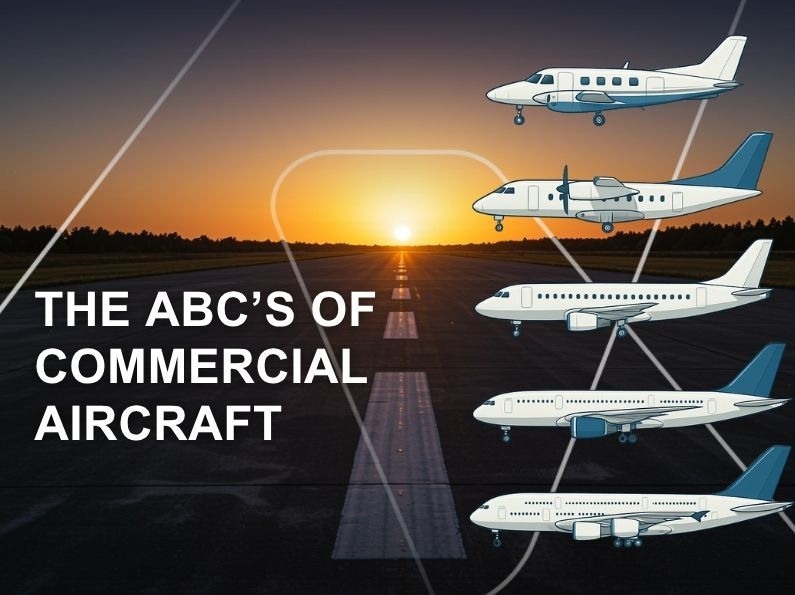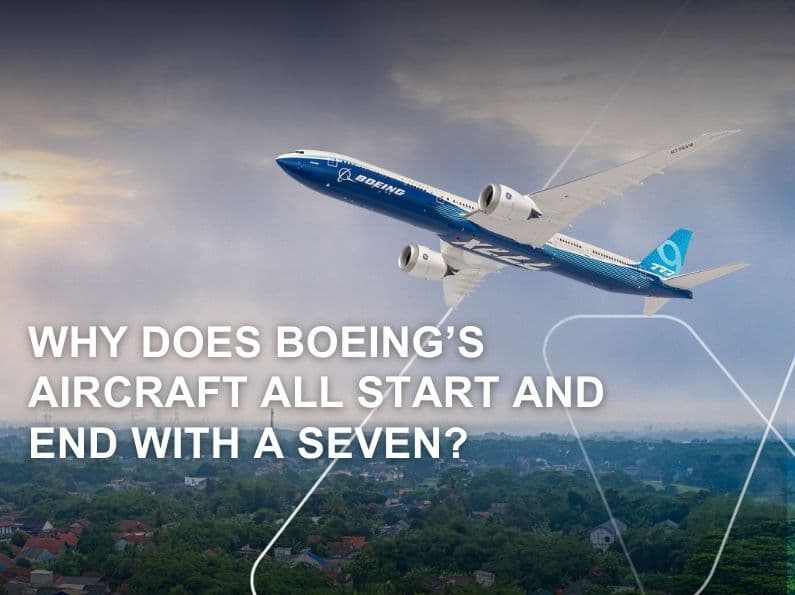The ABC’s of Commercial Aircraft

Most of us fly all the time, locally within our country, internationally across borders, or even cross-continentally. But have you ever stopped to think about how different those aircraft actually are?
The plane you board for a short one-hour domestic flight is not the same as the one taking you halfway around the world. The comfort, design, luggage allowance and even the onboard amenities vary depending on the distance, purpose, and capacity of the aircraft.
So, whether you’ve flown in a tiny 9-seater to a tropical island or cruised in a wide-body jet to the other side of the world, here’s a quick and easy guide to the different types of commercial aircraft and what makes each one special.
1. The Air Taxi & Commuter Aircraft
Seats: 4 to 9 passengers
Examples: Cessna Caravan, Pilatus PC-12, Beechcraft King Air
These small aircraft are the “air taxis” of the sky. You’ll find them connecting remote areas, small islands, or regional hubs that big jets can’t reach.
They usually operate short, on-demand routes, sometimes chartered, sometimes scheduled and they’re prized for their flexibility.
✈️ Passenger experience:
- No in-flight meals (it’s usually a short trip!)
- Carry-on luggage only, or very limited checked baggage due to weight restrictions
- Close-knit cabin where you might even greet the pilot as you board
Why they’re great:
- Perfect for short, remote routes
- Quick boarding and flexible scheduling
- Often land at smaller airports closer to your destination
Trade-offs:
- Basic comfort and amenities
- More sensitive to weather
2. The Regional Connector
Seats: 30 to 100 passengers
Examples: ATR 72, Embraer E175, Bombardier Dash 8
These aircraft are the vital link between smaller cities and larger international airports. They typically operate short- to medium-haul flights of one to three hours.
They’re efficient, reliable, and a common sight in regional airline fleets, bridging the gap between communities and global routes.
✈️ Passenger experience:
- Snacks or light refreshments rather than full meals
- Checked luggage usually included, though often with lower weight limits
- Smaller overhead bins, so keep that carry-on compact
- No seat-back screens on most regional aircraft, though some newer jets offer streaming options
Why they’re great:
- Cost-effective and frequent service between smaller cities
- Smooth rides on modern regional jets like the Embraer E2 series
- Quick boarding and disembarkation
Trade-offs:
- Tighter cabins and limited amenities
- Louder cabins on turboprop aircraft
3. The Narrow-Body Jetliner
Seats: 120 to 220 passengers
Examples: Boeing 737, Airbus A320, Airbus A321XLR
These are the aircraft most travelers know best. They handle the bulk of global short- and medium-haul traffic. You’ll find them on everything from quick domestic hops to six-hour international routes.
Modern variants are incredibly efficient and even capable of long flights that used to require wide-body jets.
✈️ Passenger experience:
- Meals vary: short flights might offer snacks; longer ones often include hot meals
- Checked luggage depends on your fare type (budget airlines often charge extra)
- Entertainment: many now feature Wi-Fi or seat-back screens
- Cabin comfort has improved significantly with quieter engines and mood lighting
Why they’re great:
- Efficient, fast, and reliable
- Ideal for both budget and full-service operations
- Great for short- to mid-range international routes
Trade-offs:
- Single aisle means slower boarding
- Less cabin space than wide-bodies
4. The Long-Haul Wide-Body
Seats: 250 to 400+ passengers
Examples: Boeing 777, Boeing 787 Dreamliner, Airbus A330, Airbus A350
These are the aircraft designed for serious travel, the ones that take you across oceans and continents. Wide-body jets have two aisles, higher cabin ceilings, and more space for amenities and comfort.
Many airlines configure them with multiple cabins: economy, premium economy, business, and sometimes first class.
✈️ Passenger experience:
- Full meal service (and often multiple courses)
- Checked luggage almost always included, even on economy fares
- Larger seats, quieter cabins, better air pressure and humidity levels
- Personal entertainment screens and power outlets at every seat
Why they’re great:
- Designed for comfort on long-haul flights
- Spacious cabins and smoother rides
- Modern jets (like the A350 and Dreamliner) have lower cabin altitude and better air quality
Trade-offs:
- Higher ticket prices
- Only operate between major airports
5. The Super-Jumbo Experience
Seats: 400 to 850 passengers
Examples: Airbus A380, Boeing 747
These are the iconic giants of the sky, the kind of aircraft you board and feel like you’re entering a flying city. With two decks and multiple cabin zones, these aircraft are built for ultra-long-haul travel and high-demand routes.
✈️ Passenger experience:
- Premium meals and beverages across classes
- Generous luggage allowances, even in economy
- Quiet, smooth, and spacious cabins, some even have lounges or showers in first class
- Extensive entertainment options with massive libraries of movies and TV shows
Why they’re great:
- Ultimate comfort and range
- Ideal for long, busy routes
- Exceptionally stable flight experience
Trade-offs:
- Expensive to operate and maintain
- Limited airports can accommodate their size
✈️ Wrapping It Up
From 4-seater air taxis to 500-seat super-jumbos, every aircraft type offers a different kind of flying experience. Smaller aircraft focus on accessibility and flexibility, while larger ones prioritize comfort, range, and amenities.
And while most travelers focus on the seats, meals, and in-flight service, what truly keeps every flight safe and smooth are the skilled professionals behind the scenes such as pilots, cabin crew, and engineers, who operate, maintain, and prepare each aircraft before it ever leaves the gate.
At MHC Aviation, we recruit and place experienced pilots, cabin crew, and aviation engineers with airlines and operators worldwide, ensuring commercial fleets run safely, efficiently, and reliably whether it’s a 9-seater regional turboprop or a 400-seat intercontinental jet. Because no matter the aircraft type, safety, expertise, and professionalism always come first



